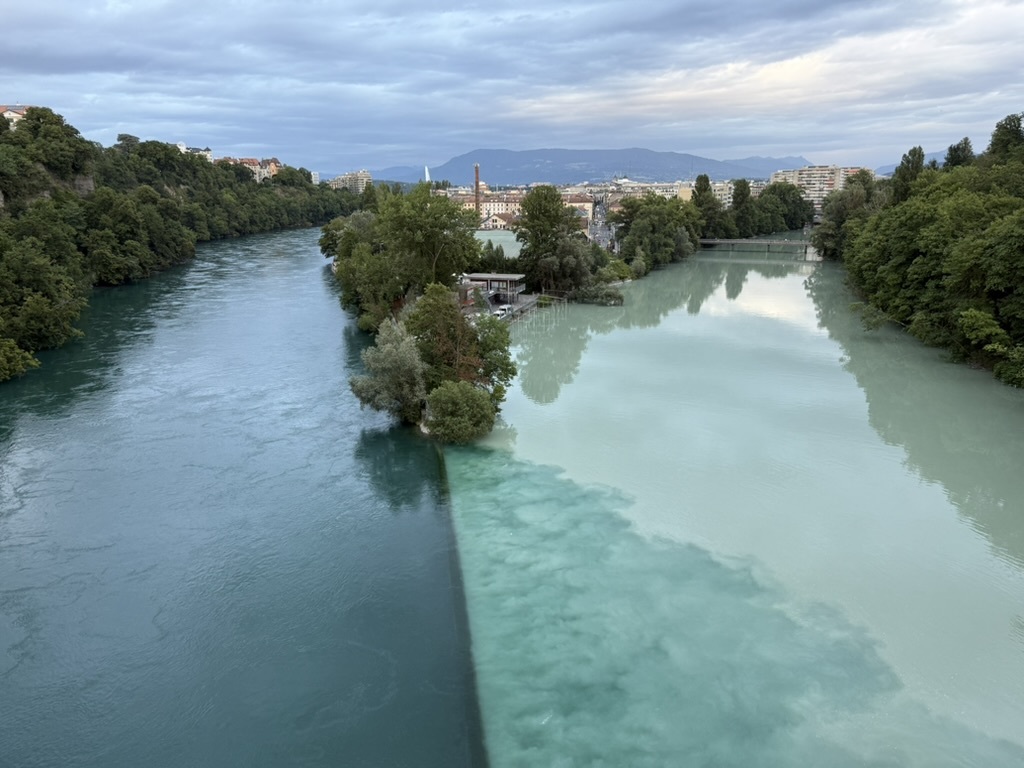
The 39th International Cosmic Ray Conference (ICRC), the largest conference in the world for cosmic ray physics, was held on July 14-July 24 at the Geneva International Conference Center in Geneva, Switzerland.
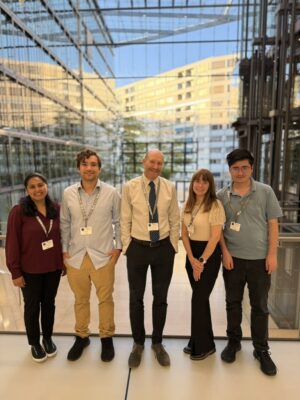
The main topics covered included cosmic-ray physics, gamma-ray astronomy, neutrino astronomy and neutrino physics, dark matter physics, solar and heliospheric physics, multimessenger astronomy, and gravitational wave astronomy.
This year, WIPAC had a strong presence, with seven talks and and six posters that covered new results and future developments for the neutrino observatories ARA and IceCube; the gamma-ray detectors HAWC, CTAO, and the Fermi Large Area Telescope (LAT); and outreach projects such as DECO.
IceCube talks summarized results on a search for neutrino emission from gravitational wave events, nearby supernovas, and active galactic nuclei; observing GeV transients with existing and upcoming neutrino facilities such as the IceCube Upgrade; and updates on the cosmic ray anisotropy with IceCube. Results from source searches using IceCube neutrinos and photons from the Pierre Auger Observatory and a summary of the WIPAC-led citizen science project, DECO, were summarized in posters.
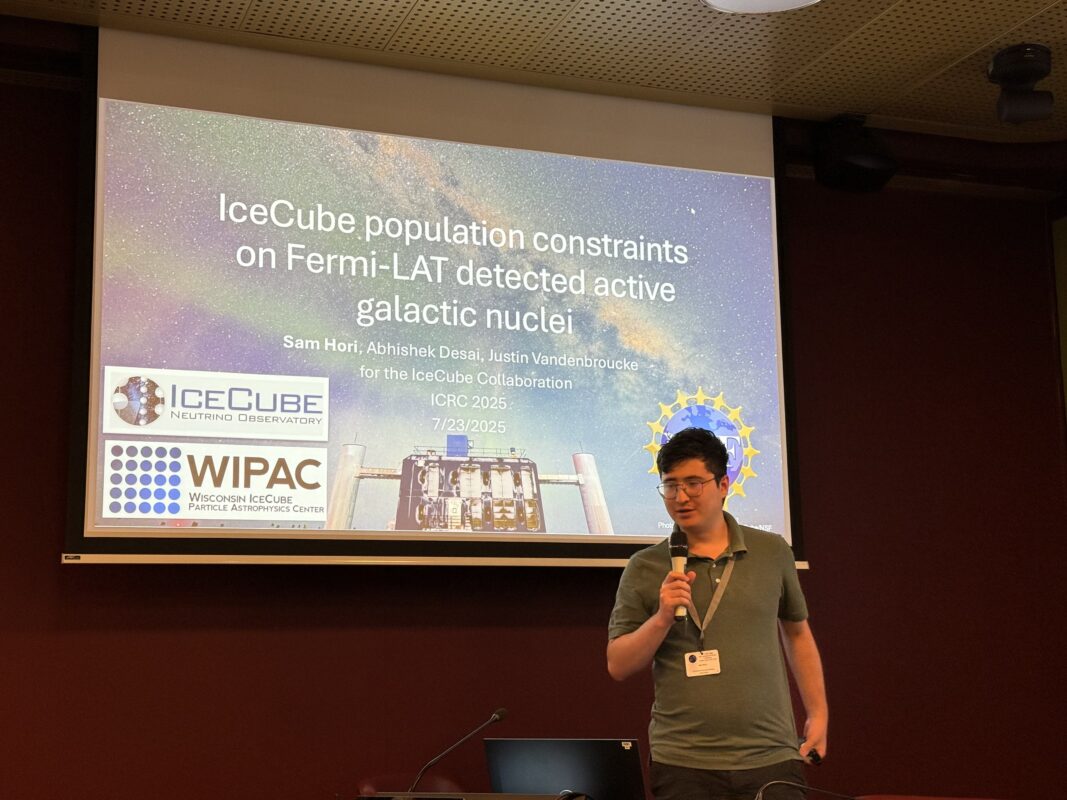
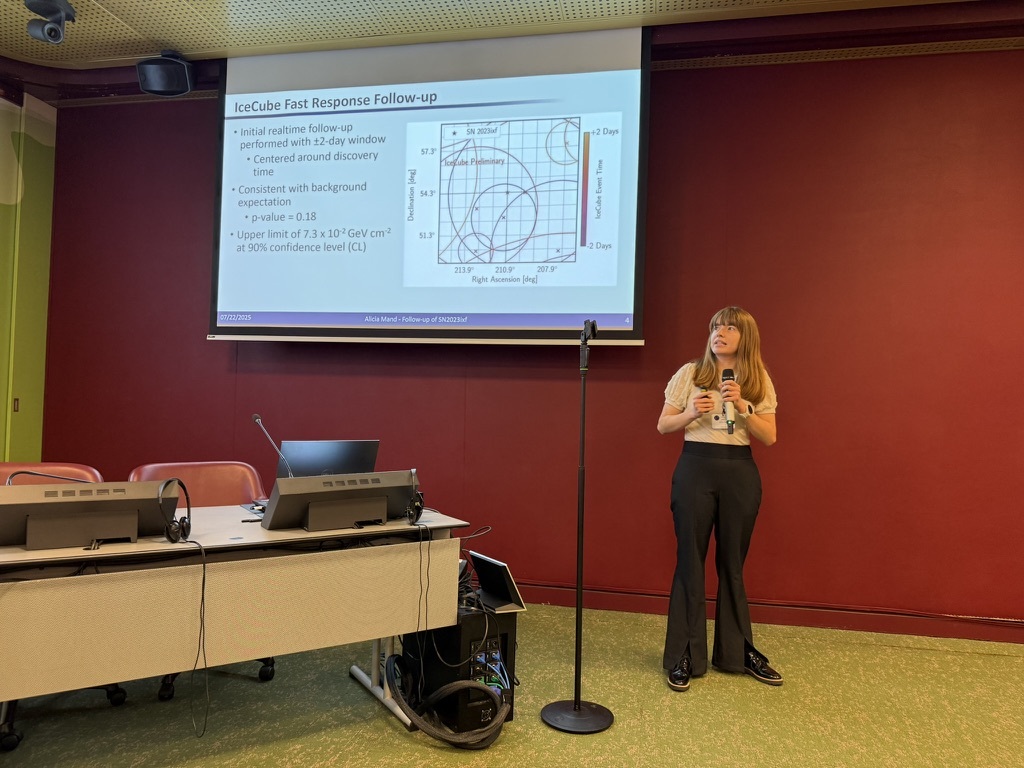
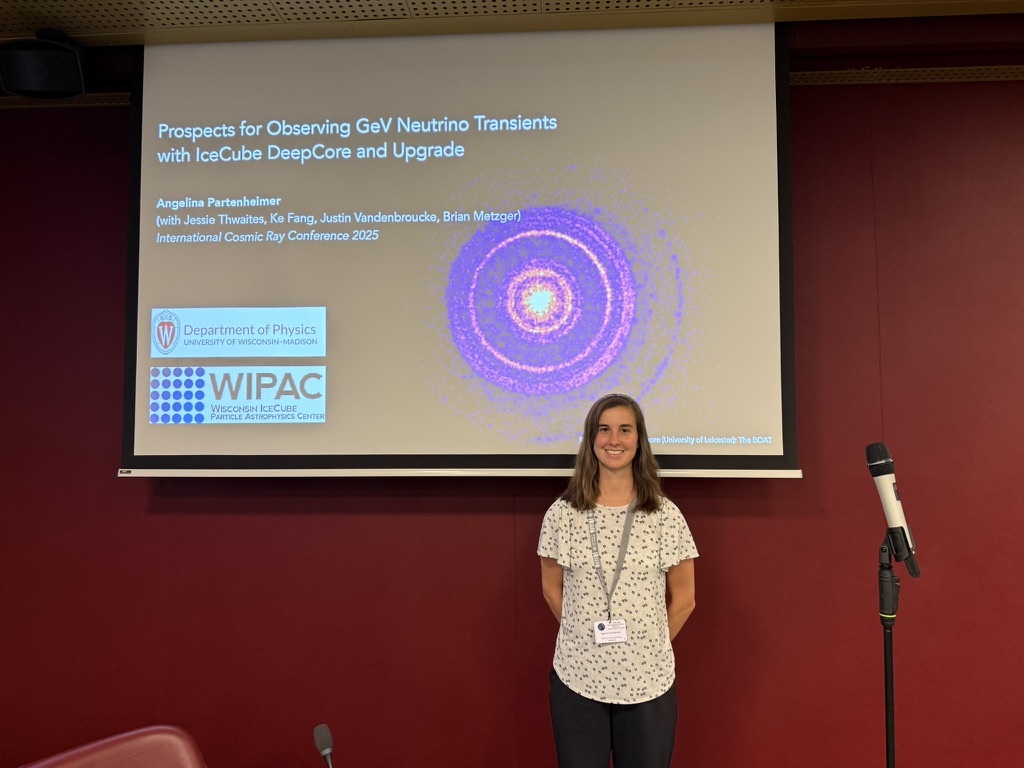
During talks at ICRC, WIPAC researchers presented results from searches for ultra-high-energy (UHE) neutrinos using ARA. The talks described updated calculations of ARA’s array-wide effective volume, sensitivity, and expected event rates for UHE neutrino-induced cascades.
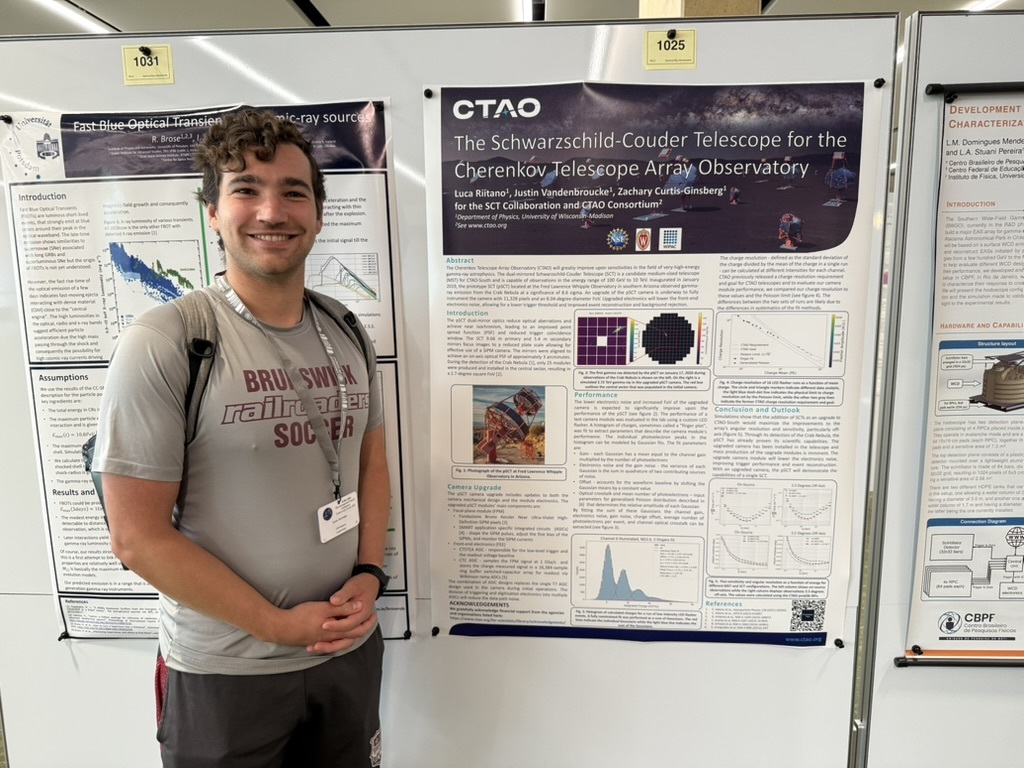
Finally, the status and future of the Schwarzschild-Couder Telescope for the Cherenkov Telescope Array Observatory was discussed in a poster.
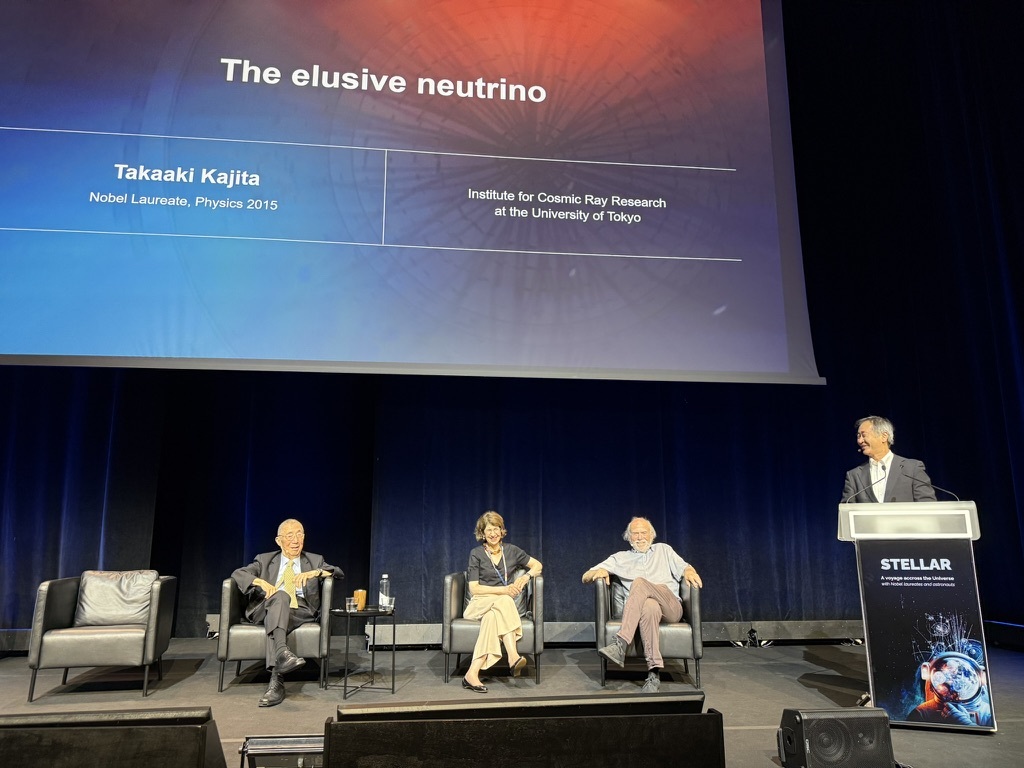
WIPAC researchers also attended a special event held at CERN on July 19 to commemorate the 56th anniversary of the first human landing on the moon. The program included inspiring talks given by Nobel Prize laureates, astronauts in training, and world-class scientists along with hands-on activities and live music for all ages.
